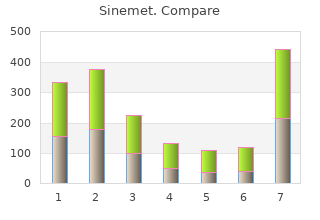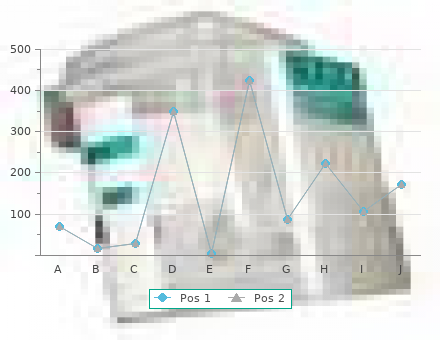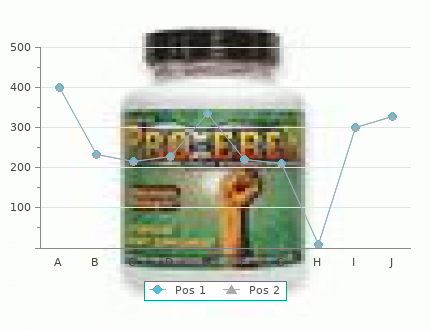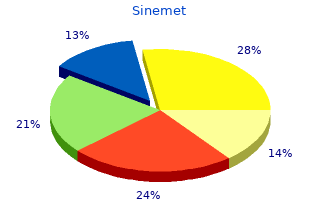Sinemet
2018, Montana State University-Billings, Keldron's review: "Sinemet 300 mg, 125 mg, 110 mg. Best Sinemet online OTC.".
During child- cell tumor cheap sinemet 300 mg mastercard symptoms zinc deficiency husky, giant cell tumor component no longer usually hood and adolescence, however, the topography detectable), which occurs in 1% of cases [2, 20]. A standard intralesional curettage is associated with a The inactive cysts migrate towards the diaphysis as the high risk of recurrence of up to 70%, while an en-bloc bone grows longer. The active cysts are immediately adja- resection can lead to major defects and difficult recon- cent to, but never cross, the epiphyseal plate. They hardly struction problems as a result of the proximity of these cause any signs or symptoms as they are not palpable tumors to joint. For these reasons, the use of necrotizing beneath the large soft tissue masses over the proximal agents is recommended (phenol, methyl methacrylate, humerus or proximal femur. Radiographic findings: In the metaphysis (usually im- The recurrence rate is primarily dependent on the qual- mediately adjacent to the epiphyseal plate) there is ity of the curettage. We perform the curettage through a an area of unilocular or multilocular osteolysis, often large incision, burr drill the whole cavity with a special with septations, that causes the bone to swell slightly drill that can drill »round corners«, remove the septa and symmetrically. The cyst wall may be paper-thin and then examine the whole tumor cavity with the ar- and fragile. The recurrence rate after this procedure is low ally be seen in the cyst and are the result of a fracture (less than 10%). The tissue consists of fill the cavity with autologous and/or homologous can- thin, slightly collagenized and vascularized connective cellous bone, sometimes using an allograft (⊡ Fig. Differential diagnosis: It can sometimes be difficult to distinguish between the simple bone cyst and an aneu- rysmal bone cyst (ABC), and active cysts in particular 4. However, the ABC almost always non-ossifying bone fibroma, fibrous produces an eccentric swelling of the bone. The MRI dysplasia, histiocytosis, infarct) scan does not always clarify matters, since fluid levels Simple bone cyst can occur with both lesions. Fibrous dysplasia can also lead to similar swellings in the metaphyseal area. Moreover, during childhood and adolescence, filled with serous flu- fibrous tumors can show relatively high signal levels id and located centrally in the metaphyses of long bones. A Langerhans cell Cause unknown, probably atrophic-degenerative, not an histiocytosis, non-ossifying bone fibroma and enchon- actual tumor. The lesion almost always occurs sone administration [42, 48] seems to be more successful, between the ages of 5 and 15 and heals on completion although recurrences are still possible, particularly with of growth. The most susceptible site is the proximal polycystic lesions close to the epiphyseal plate. The cyst is humerus, where almost 50% of all simple bone cysts are aspirated using two large cannulas. For cysts in the proximal be vaguely discernible, or even completely extin- femur we reinforce the bone using Prévot nails in order to guished, on a conventional x-ray. In contrast with avoid any fractures, which would otherwise be difficult malignant tumors, the lesion is sharply defined in to stabilize at this site. The MRI scan shows typical fluid levels, which are signal-intensive Aneurysmal bone cyst (ABC) in the T2-weighted images. If these > Definition are observed, the possibility of a teleangiectatic os- A lesion that grows expansively and eccentrically, with teosarcoma should be considered in the differential unknown, and probably non-uniform, etiology. In addition to the usual pseudocystic endothelial covering cells and giant cells. In the solid variant, the cavi- sexes are affected with roughly equal frequency. They ties fade completely into the background, leaving the tend to occur between the ages of 10 and 20, and are hard- impression of a compact tumor. The cysts are most Differential diagnosis: In view of the location and often found in the metaphyses of long bones, particularly radiographic findings, an ABC can be confused with in the knee area and the spine, usually in the area of the a giant cell tumor, simple bone cyst, chondromyxoid vertebral arches or processes. At this site the aneurysmal fibroma, but also with a teleangiectatic osteosarcoma. In the long bones, the lesion is never Aneurysmal bone cysts are also frequently a second- located primarily in the epiphysis, although it spreads ary component of other tumors (e. The ABC shows a characteristic translocation t(16;17)(q22;p13) that has been detected in classic ABCs, Treatment, prognosis as well as in solid and extraosseous variants [11. The Aneurysmal bone cysts usually grow expansively and translocation t(16;17)(q22;p13) has been shown to lead can reach a considerable size, although individual cases to upregulation of the USP6 protease, which is probably of spontaneous healing have been described. Freedom of this translocation in secondary ABCs suggests that the from recurrence can be achieved reliably only by at least etiology of secondary (reactive) lesions differs from that a marginal, or preferably wide, resection.


Kasser J buy 110 mg sinemet with mastercard treatment broken toe, Upton J (1991) The shoulder, elbow, and forearm in Apert syndrome. Kreiborg S, Barr M Jr, Cohen MM Jr (1992) Cervical spine in the Apert syndrome. Mehlman C, Rubinstein J, Roy D (1998) Instability of the patello- femoral joint in Rubinstein-Taybi syndrome. Quintero-Rivera F, Robson CD, Reiss RE, Levine D, Benson CB, Mulliken JB, Kimonis VE (2006) Intracranial anomalies detected by imaging studies in 30 patients with Apert syndrome. Tolarova MM, Harris JA, Ordway DE, Vargervik K (1997) Birth preva- lence, mutation rate, sex ratio, parents’ age, and ethnicity in Apert syndrome. Wynne-Davies Wynne, Gormley J (1985) The prevalence of skeletal dysplasias. Down syndrome gap between the great toe and second toe, broad iliac remains the commonest hereditary disease, followed by wing and general ligament laxity. The risk of a child contracting (not especially frequent) orthopaedic problems are Down syndrome increases with the age of the parents. The defect usually occurs as a result of the failure intestinal abnormalities may necessitate early surgical of the chromosome to divide during mitosis. The children subsequently show psychomotor the additional chromosome is translocated to another retardation. Orthopaedic problems mainly arise from habitual patel- This possibility is important to bear in mind in respect of lar dislocations, flexible flatfeet, refractory congenital genetic counseling. A mother with a translocated chro- or, later on, voluntary hip dislocations and atlanto- mosome 21 has a risk of 1 in 3 that her next child will axial instability, all of which are attributed to the pro- have Down syndrome, whereas the risk associated with nounced general ligament laxity. Although congenital hip sociated with the Tolteca culture of Mexico, in which it is dislocations are not especially common, they are dif- easy to identify the short palpebral fissures, oblique eyes, ficult to treat as the ligament laxity obstructs attempts midface hypoplasia, and open mouth with macroglossia to achieve stable centering. In the 1980’s the incidence of trisomy 21 in England and voluntary dislocations occur (⊡ Fig. Thanks head necrosis and slipped capital femoral epiphysis are to prenatal diagnosis however (particularly ultrasound), frequent in Down syndrome. Image converter x-rays of the left hip of a 7-year old girl with Down syndrome. The same applies for the multidi- until the age of 2–4 years and are attributable to the rectional instability of the shoulders, which is more extreme ligament laxity. The treatment flatfeet, with features similar to those of the idiopathic is very difficult, and conservative management usu- form, are also very often found in children with Down ally proves unsuccessful. Isolated cases of clubfeet have also been capsular shrinkage and longer-lasting fixation are 4 described for trisomy 21. Special attention must be paid to any atlantoaxial – Habitual patellar dislocation: In this case physio- instability or occipitoatlantal hypermobility ( Chap- therapy should be administered with the aim of ter 3. The possibility of an atlantoaxial in- strengthening the quadriceps muscle. This some- stability should be considered if the child has neck times produces the desired outcome, particularly pain, torticollis, motor weakness or gait or micturition if the vastus medialis muscle can be strengthened. Functional x-rays of the cervical spine Occasionally, however, surgical measures are also should be arranged if such signs and symptoms are required ( Chapter 3. These are also essential before operations – Atlantoaxial instability : Since neurological symp- or if the child wishes to take part in sports. One toms occur in 66% of patients with instability of the large-scale study found that atlantoaxial instability upper cervical spine, surgical stabilization is was present in 8. Of these sometimes (but very rarely) unavoidable and is oc- two-thirds showed neurological symptoms. Since inept manipulations can trigger is performed between the occiput and C 2. The neurological signs and symptoms, functional x-rays result is fixed either with wires or plates. Additional in maximum inclination and reclination are essential external stabilization either with a Minerva jacket prior to surgical procedures. The ilium is broad and shaped like an elephant’s ear (since it is rotated towards the frontal plane), the acetabulum 4. This configuration Various abnormalities of the skeletal system are present is also called »cordate pelvis«. X-rays of the lum- in trisomy 8: Thus, the patient may have 13 ribs and the bar spine often show that the vertebral bodies are vertebral bodies are often wedge-shaped.

The ala and obturator view should eral order sinemet 110 mg amex medications ranitidine, double pubic ramus fractures or rupture of the not be x-rayed routinely in view of the additional symphysis pubis with double ipsilateral ramus frac- radiation exposure. Compared to adults, both the tures (»straddle fracture«); rupture of the symphysis symphysis and the iliosacral joint space are wider in combined with fracture/dislocation of the elements children, which can give rise to misinterpretations. Correlation with the clinical findings is pelvic fractures during the growth phase and are pri- crucial, following the principle »if all else fails, exam- marily seen in adolescents. Otherwise the standard bined with pelvic fractures, x-ray on its own can provide sufficient information – Type C: linear with hip instability,. Fracture types In types B–D the triradiate cartilage can also be af- ▬ Type I: Apophyseal avulsion fractures occur as a result fected with increasing frequency and severity. Types of sudden muscle contractions, rarely as a result of A, C and D represent concomitant lesions accompa- long-term repetitive traction. Clinical diagnosis is therefore particularly important and is based on local tenderness and swelling, usually over the lower part of the sacrum, and pain on rectal palpa- tion. Pelvic injuries without serious late sequelae: Pelvic wing fractures and isolated ilium fractures (right half of the pelvis), isolated tures depends to a large extent on the concomitant pubic ramus fractures and avulsions of the anterior inferior and supe- local and remote injuries. The bone lesions them- rior iliac spine (left half of the pelvis) selves rarely require surgical management. Spontaneous correction Spontaneous correction can be expected to occur after dislocated pubic ramus fractures and acetabular rim frac- tures in children under 10 years of age. Conservative treatment Unless concomitant injuries dictate otherwise, a com- bination of analgesic medication, several days’ bedrest in a comfortable position (e. Meanwhile the patient should be in- formed that any palpated lumps are harmless so as to avoid any unnecessary procedures. In very rare cases, however, impingement can subsequently occur during flexion movements between an anterior inferior iliac spine fracture that has consolidated too low down and the femoral neck. Callus formations after avulsion of b the ischial tuberosity may be painful when sitting and therefore sometimes warrant surgical removal ▬ Type II, ileum: Thanks to the good circulation and its embedding in the muscles, the ileum consolidates within 3–4 weeks, even with comminuted fractures. Possibly appropriate for ambitious athletes in order c Acetabular fractures) to shorten the period of rehabilitation, although the 251 3 3. Secondarily, if impingement Imaging investigations symptoms are present for example. If the AP x-ray of the pelvis does not show any clear frac- ▬ Acetabular fractures: ture or dislocation, an axial view is arranged. Surgical treatment for local concomitant injuries, open fractures, deformity or to facilitate care in poly- Fracture types traumatized patients. Epiphyseal separations (type I) represent the most ▬ Visible pelvic deformities are the potential conse- medial, and also the rarest, femoral neck fractures. They are after ruptures of the symphysis pubis can represent an very rarely connected with birth trauma (differential obstruction during labor. Accordingly, displacement of one half of the pelvis in unstable the separations are generally not induced by trauma fractures (Malgaigne fractures). Lateral femoral neck fractures (basocervical, cervicotro- ▬ Coxarthrosis in incongruence after acetabular frac- chanteric, type III) occur medially to, or on, the upper tures and femoral head necroses. They are more likely to end in a femoral head necrosis or coxa vara in children than in adults. Fracture of the proximal femur during the growth pathological fractures occur particularly with juvenile phase is roughly 100 times less common than dur- bone cysts. Proximal femoral fractures are usually the result of major Lesser trochanter fractures correspond to apophyseal traumas, particularly traffic accidents. If there is a history avulsions of the iliopsoas tendon, usually in peripu- of relatively minor traumas, other bone disorders such bertal athletes. The avulsions rarely involve a disloca- as a unicameral bone cyst or fibrous dysplasia should be tion of more than a few centimeters and heal without considered. Clinical features Isolated cases have been described in children and Inguinal pain, also leg shortening and external rotation adolescents undertaking high levels of sporting activ- with dislocated fractures. Fracture types at the proximal end of the femur: The classi- be differentiated from the rare per- and subtrochanteric femoral frac- cal femoral neck fractures – epiphyseal separation (type I), transcervi- tures (type IV) and avulsion of the two trochanters cal (type II) and basocervical femoral neck fracture (type III) – should Treatment Conservative treatment Aspiration of the hemarthrosis in femoral neck fractures and immobilization in a hip spica extending to just above the knee on the non-fractured side: ▬ Non-dislocated femoral neck fractures, greater trochan- ter avulsions, peri- and subtrochanteric fractures (the latter without previous aspiration). Surgical treatment ▬ Epiphyseal detachments: Wiring or nails through the growth plate or a screw.

| Comparative prices of Sinemet | ||
| # | Retailer | Average price |
| 1 | Kroger | 776 |
| 2 | Albertsons | 534 |
| 3 | Delhaize America | 123 |
| 4 | Nordstrom | 252 |
| 5 | TJX | 572 |
| 6 | Meijer | 796 |
| 7 | Amazon.com | 631 |
| 8 | Hy-Vee | 276 |
9 of 10 - Review by S. Rasul
Votes: 224 votes
Total customer reviews: 224


